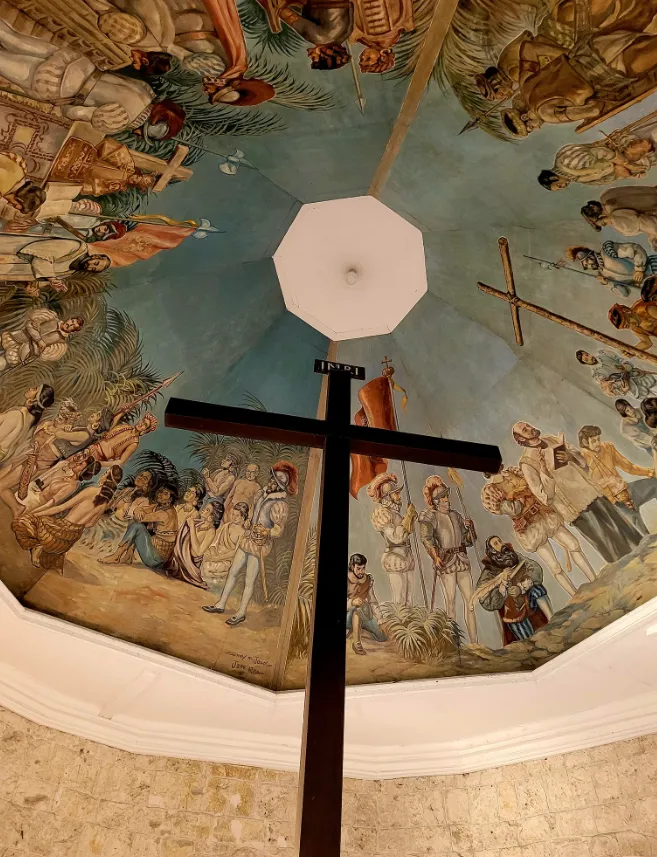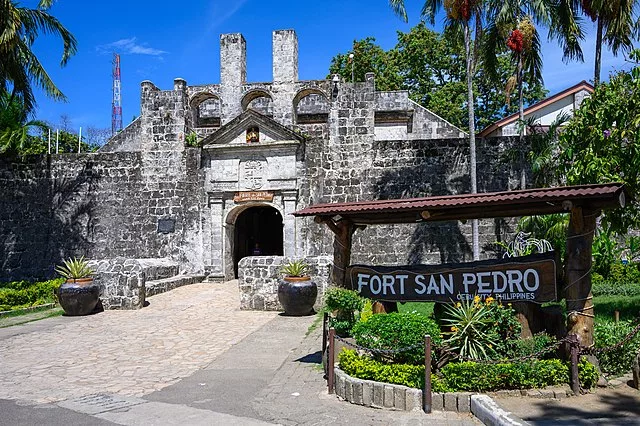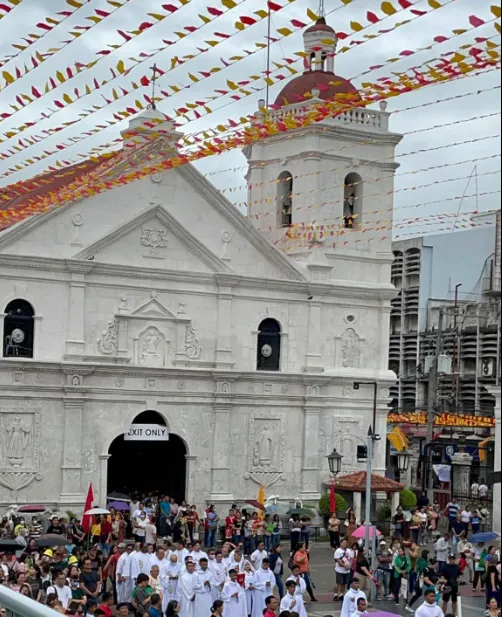
Introduction to Cebu City’s Rich History
Cebu City, often referred to as the Queen City of the South, is a vibrant hub of culture and history in the Philippines. With a rich tapestry woven from centuries of colonial rule, indigenous heritage, and modern influences, the city offers travelers a unique glimpse into the past. As the first site of Spanish colonization, Cebu is home to numerous historical landmarks that tell the story of its evolution from a native settlement to a bustling urban center.
This article delves into some of the most significant historical sites in Cebu City, exploring their origins, importance, and what visitors can expect when they explore these cultural treasures. Understanding these sites not only enriches the travel experience but also fosters a deeper appreciation of Cebu’s historical legacy.
Magellan’s Cross

History and Significance of Magellan’s Cross
Magellan’s Cross is perhaps one of the most iconic symbols of Cebu City and represents the arrival of Christianity in the Philippines. This cross was planted by Portuguese explorer Ferdinand Magellan in 1521 upon his arrival, marking the beginning of a new era for the native population. The cross is housed in a small chapel situated near Cebu City Hall, and it has become a significant pilgrimage site for Catholics.
The original wooden cross is encased in a protective structure, as it has been preserved over the centuries. Historians believe that the original cross was made from tropical hardwood, and its significance extends beyond mere religious symbolism; it represents the cultural transformation that occurred due to Spanish colonization. Today, it stands as a testimony to the enduring legacy of the Catholic faith in the Philippines.
Visiting Magellan’s Cross: What to Expect
When visiting Magellan’s Cross, travelers can expect a simple yet poignant experience. The site is often bustling with tourists and locals alike, all eager to pay their respects and take photographs. The cross itself is surrounded by vibrant paintings depicting the arrival of Christianity, providing a visual narrative that enhances the visitor’s understanding of its significance.
As part of your visit, consider exploring the adjacent Basilica del Santo Niño and the surrounding area. There are numerous shops and stalls selling religious memorabilia, making it a great opportunity to pick up souvenirs. It is also wise to visit during early morning or late afternoon to avoid the larger crowds and enjoy a more tranquil experience.
Tips for Travelers
- Plan your visit during weekdays to minimize crowd congestion.
- Respect the religious nature of the site; dress modestly and maintain a quiet demeanor.
- Engage with local guides who can offer insights into the history and significance of the cross.
- Ensure you take plenty of pictures but be mindful of other visitors.
Fort San Pedro

Historical Background of Fort San Pedro
Fort San Pedro is a military defense structure built by the Spaniards in the late 16th century. It is the oldest and smallest fort in the Philippines, designed to protect the Spanish settlers from foreign invasions and pirate attacks. The fort has a triangular shape and originally served as a fortification during the colonization period. Over the years, it has undergone various transformations, including serving as a military barracks, a hospital, and even a convent.
Today, Fort San Pedro is a national historical landmark that showcases the architectural prowess of the Spanish colonial period. It stands as a testament to Cebu’s strategic importance during the colonial era and serves as a reminder of the turbulent history that shaped the nation.
Features and Attractions of Fort San Pedro
Visitors to Fort San Pedro will find a well-preserved structure complete with stone walls, a moat, and an expansive courtyard. The fort houses several historical artifacts, including cannons and other weaponry used during the colonial period. Additionally, the fort features a small museum that offers exhibits on its history and the various roles it played throughout the years.
One of the highlights of the fort is the panoramic view it offers of the Cebu Harbor. Standing atop the fort’s walls, visitors can enjoy breathtaking scenery while reflecting on the significance of this historic site. The lush gardens surrounding the fort also provide a serene atmosphere, perfect for relaxation and contemplation.
Visitor Information and Accessibility
Fort San Pedro is conveniently located near Cebu’s city center, making it easily accessible for both locals and tourists. The entrance fee is minimal, and the fort is open daily from morning until early evening. Guided tours are available, offering in-depth information about the fort’s history and architecture.
For those interested in combining their visit with other local attractions, Fort San Pedro is near the famous Magellan’s Cross and the Basilica del Santo Niño, allowing for a comprehensive historical tour of Cebu City in one day. Be sure to wear comfortable shoes, as exploring the fort’s different levels requires some walking.
Basilica del Santo Niño

Historical Importance of Basilica del Santo Niño
The Basilica del Santo Niño holds the distinction of being the oldest Roman Catholic church in the Philippines, established in 1565. It houses the revered image of the Santo Niño (Holy Child), a statue that symbolizes Cebu’s deep-rooted Catholic faith. The image was gifted to Queen Juana by Magellan, and its significance has attracted countless pilgrims over the centuries.
The basilica has undergone numerous renovations and reconstructions due to destruction from wars and natural disasters. Despite these challenges, it remains a focal point of faith and cultural heritage, attracting pilgrims and tourists alike who come to pay homage to the Santo Niño.
Architectural Highlights and Artifacts
The architecture of the Basilica del Santo Niño reflects a blend of Renaissance and Baroque styles, characterized by its intricate façade and impressive bell tower. Inside, the interior is adorned with beautiful murals, stained glass, and numerous devotional candles, creating a serene atmosphere conducive to prayer and reflection.
One of the main attractions within the basilica is the original image of the Santo Niño, housed in a glass case. Visitors often light candles and leave flowers as a sign of devotion. The basilica also features a small museum showcasing various artifacts, including religious relics and historical documents, enhancing the visitor’s understanding of Cebu’s religious heritage.
Events and Festivals at Basilica del Santo Niño
The Basilica del Santo Niño is the center of one of the Philippines’ most vibrant festivals—the Sinulog Festival. Celebrated every third Sunday of January, this festival honors the Santo Niño and features vibrant parades, street dancing, and religious processions that draw thousands of visitors. The event not only showcases Cebu’s cultural richness but also its strong religious devotion.
Attending the Sinulog Festival is a unique experience that provides an opportunity to witness the fusion of faith and culture through lively performances and colorful displays. The festival, rich in tradition, transforms the streets of Cebu into a kaleidoscope of colors and sounds, making it an unforgettable experience for any traveler.
Conclusion: Discovering Cebu City’s Historical Legacy
Encouragement to Visit Historical Sites in Cebu City
Cebu City’s historical sites offer a compelling narrative of the Philippines’ colonial past, cultural evolution, and religious significance. From Magellan’s Cross to Fort San Pedro and the Basilica del Santo Niño, each site provides unique insights that contribute to a greater understanding of the nation’s history. As travelers explore these landmarks, they become part of a story that transcends time and connects generations.
Final Thoughts on Preserving History Historical Sites in Cebu City
Exploring these historical sites is not just about witnessing architectural beauty; it’s about engaging with the past to create a richer understanding of the present. As visitors, it is essential to appreciate and respect these places, ensuring they are preserved for future generations. Cebu City’s historical legacy invites everyone to delve deeper into its stories, fostering a sense of connection to both the land and its people.
FAQs Historical Sites in Cebu City
What is the best time to visit Cebu City?
The best time to visit Cebu City is during the dry season, from December to May, when the weather is pleasant for sightseeing.
Are there entrance fees for historical sites in Cebu City?
Yes, most historical sites have minimal entrance fees, typically ranging from 20 to 100 PHP, contributing to their maintenance and preservation.
Can I take photographs at these historical sites?
Photography is generally allowed, but be respectful of the religious significance of certain sites, especially during ceremonies.
How can I get to Cebu City’s historical sites?
Cebu City has various transportation options, including taxis, jeepneys, and tricycles, making it easy to navigate between historical sites.
Is it safe to explore Cebu City?
Cebu City is generally safe for tourists, but it’s advisable to stay aware of your surroundings and avoid less populated areas at night.
If you are looking for best places to stay in cebu philippines and you might be also intested in Island Hopping in Cebu City
You might also be interested to
- Best hotel in cebu
- Exploring the Map of the Philippines: A Comprehensive Guide
- Cebuano Dishes: A Culinary Adventure Through the Flavors of Cebu
- Olango Island Travel Guide: Beaches, Wildlife, & More (2024)
- Temple of Leah Unraveling the Untold Story of Cebu’s “Taj Mahal”: The Temple of Leah
Table of Contents
Giovanni Carlo P. Bagayas is a seasoned travel guide and passionate explorer from the Philippines. With years of experience uncovering the hidden gems of his homeland, Giovanni has dedicated his career to showcasing the beauty, culture, and adventure that the Philippines has to offer. As the author of Best Philippines Travel Guide, he combines his expertise and love for travel to provide insightful tips, detailed itineraries, and captivating stories for travelers seeking unforgettable experiences in the Philippines. Giovanni’s mission is to inspire wanderlust and help visitors discover the true essence of his vibrant country.
